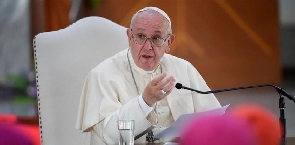Oil prices stabilised in the global commodities market despite lingering demand concerns forcing key market actors to weigh their respective positions.
US Federal Reserve interest rates cut expectations and raise hope that demand would increase should the Chinese economy rebound.
On the downside, Middle East tension and US recession fear limit further price increases. Brent crude increased by 0.6% to $71.82 per barrel after falling out from the line due to weak demand.
US benchmark West Texas Intermediate (WTI) rose 0.6% to $68.07 per barrel after closing at $67.67 in the prior session.
The forecast that the Fed will cut interest rates by 25 basis points this month and by 100 basis points by the end of the year remains strong.
The interest rate cut in the country is predicted to cause the US dollar to depreciate against other currencies, making oil cheaper and increasing oil demand.
Also, concerns that the ongoing conflicts in the Middle East will spread to a wider area and disrupt global oil supply supported upward price movements.
US data increased recession concerns in the world’s biggest oil-consuming country raised further concerns in the market.
The US economy added 142,000 jobs in August, fewer than estimates of 164,000 employment growth, according to figures released by the Labor Department on Friday. The number of new jobs added in July was similarly reduced by 25,000, from 114,000 to 89,000.
Analysts believe the unexpected increase in the unemployment rate last month as well as employment data, which was below expectations this month, triggered recession fears and reduced risk appetite in the country.
Experts now look to inflation data, due later in the week, to provide more information about the size of the expected rate cut at the Federal Open Market Committee (FOMC) meeting on Sept. 17-18.
Oil prices stabilised yesterday and Brent managed to settle 1.1% higher on the day. This is despite a bearish tone coming from Asia Pacific Petroleum Conference in Singapore, which kicked off yesterday.
Demand concerns are the main focus, particularly when it comes to China. Most are also looking at a well-supplied market in the months ahead. A bearish outlook leaves OPEC+ with two options, ING commodities strategist said in a note.
OPEC+ has a choice to continue to try manage supply in order to support prices. However, in doing so, they will be giving market share away to non-OPEC+ producers, ING said. The other option is to open the taps in an attempt to push out other producers.
The group would have to be willing to accept much lower prices with this option. ING analysts believe OPEC will follow the former option, there is a risk, particularly if they are having little success in supporting the market by pursuing the other option at some point through 2025.
China is expected to release its first batch of trade data for August, which will offer some more insight into how Chinese oil demand is performing.
Crude imports over the first seven months of the year were down 2.4% year on year. OPEC will release its latest monthly oil market report. Last month the group revised its 2024 demand growth estimate down by 130,000 b/d to 2.11 million b/d, while there was also a marginal revision lower in 2025 demand.
However, OPEC’s demand numbers are still extremely bullish relative to other estimates and do not align with price action.
ING analysts could see the group making further downward revisions to their demand estimates.
The US Energy Information Administration will also release its Short Term Energy Outlook today, which will include its latest outlook on the global market and US crude oil production forecasts.
Business News of Tuesday, 10 September 2024
Source: dmarketforces.com

















